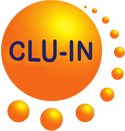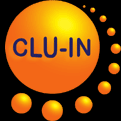Search Result
HYDRAULIC CONDUCTIVITY OF GEOSYNTHETIC CLAY LINERS PERMEATED WITH ACID MINE DRAINAGE
Wang, B., X. Dong, B. Chen, and T. Dou.
Mine Water and the Environment 38(3): 658-666(2019)
Filed Under: Research
Filed Under: Research
Two geosynthetic clay liners (GCLs) were lab-tested on acid mine drainage (AMD) from a coal gangue impoundment. One liner contained natural sodium bentonite (GCL-N), and the other contained sodium-activated bentonite (GCL-S). The chemical compatibility and the effects of effective stress and type of bentonite used in the liners were evaluated. Results showed that permeation with a synthesized AMD increased the hydraulic conductivity by 33 times (GCL-N) and 104 (GCL-S) times at an effective stress of 10 kPa. Under an effective stress of 50 kPa, the hydraulic conductivity of the GCL-N and GCL-S permeated with AMD was 1.1 and 6.6 times higher than the values based on permeation with distilled water. However, when the effective stress was increased to 200 kPa, the AMD had no negative effect on hydraulic performance. The difference in hydraulic conductivity was observed at effective stresses of 10 and 50 kPa, with the GCL-N consistently having less hydraulic conductivity than the GCL-S. The detrimental effects of AMD permeation and low-quality bentonite can be countered by applying high effective stress to the GCLs. Both GCLs types may be suitable as effective basal liners for coal gangue impoundments where relatively high stress can be applied.
Mine Water and the Environment 38(3): 658-666(2019)
Filed Under: Research
Filed Under: Research
Two geosynthetic clay liners (GCLs) were lab-tested on acid mine drainage (AMD) from a coal gangue impoundment. One liner contained natural sodium bentonite (GCL-N), and the other contained sodium-activated bentonite (GCL-S). The chemical compatibility and the effects of effective stress and type of bentonite used in the liners were evaluated. Results showed that permeation with a synthesized AMD increased the hydraulic conductivity by 33 times (GCL-N) and 104 (GCL-S) times at an effective stress of 10 kPa. Under an effective stress of 50 kPa, the hydraulic conductivity of the GCL-N and GCL-S permeated with AMD was 1.1 and 6.6 times higher than the values based on permeation with distilled water. However, when the effective stress was increased to 200 kPa, the AMD had no negative effect on hydraulic performance. The difference in hydraulic conductivity was observed at effective stresses of 10 and 50 kPa, with the GCL-N consistently having less hydraulic conductivity than the GCL-S. The detrimental effects of AMD permeation and low-quality bentonite can be countered by applying high effective stress to the GCLs. Both GCLs types may be suitable as effective basal liners for coal gangue impoundments where relatively high stress can be applied.
The Technology Innovation News Survey welcomes your comments and
suggestions, as well as information about errors for correction. Please
contact Michael Adam of the U.S. EPA Office of Superfund Remediation
and Technology Innovation at adam.michael@epa.gov or (703) 603-9915
with any comments, suggestions, or corrections.
Mention of non-EPA documents, presentations, or papers does not constitute a U.S. EPA endorsement of their contents, only an acknowledgment that they exist and may be relevant to the Technology Innovation News Survey audience.





